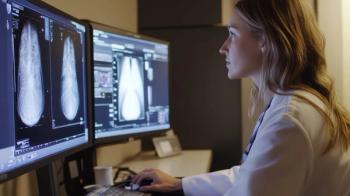
Reject Analysis: Pictures or it Didn’t Happen
The dangers of rejecting images.
As a radiographer working in general radiology, you will be familiar with famous sentences like ”let me take one more, just to be sure” or “I don’t think this is lateral enough to visualize the pathology.” If you work in a radiology department, you’ll certainly have experienced some of these cases in your professional life:
- The patient moves during the examination
- The quality of the image is insufficient due to the technique
- The field is more collimated than it should be and leaves out part of the region of interest
- An artifact appears on the image
- The wrong body part is examined
- The wrong patient is examined
What do you do in these cases? You repeat the examination. But what happens with the previous discarded image? If you send it to PACS, along with the new examination, it will be considered in the patient radiology history. Furthermore, if your hospital has a Dose Management System, the radiation dose delivered to the patient for the first image will be taken into account.
Related article:
But what happens if you don’t send the image or you delete it? Then, it’s like it never happened! Nevertheless, it did, and the patient received that radiation dose even though it wasn’t recorded. In fact,
So, what can we do?
Goal 1: Reduce Image Retakes
Many studies have shown that the most common reason for rejection is “positioning and anatomical cut off,” a reason that frequently increases for larger body parts.
As patient positioning, anatomy cut off and presence of artifacts are the most common causes for image rejection, Lin et al. have proposed useful tips to reduce them:
- Remind the radiographer to check grid status (yes/no) to prevent machine problem or improper exposure
- Use foot marks for positioning right and left feet to prevent position error
- Train radiographers to adjust the proper posture of the patient in lateral views
- Put a poster to remind patient and radiographer to assure the artifacts have been removed
- Check if a patient’s chest fits the chosen detector and the field during chest examination to prevent anatomy cutoff
After setting these guidelines, they achieved a significant reduction in the rejection rate over a period of six months.
Goal 2: Re-think the Need for Rejection
An image has diagnostic value when it contains an element that can help the reporter make a diagnosis. This is true, not only when it has been sent for revision, but also when it has been “deleted.” In fact, a
Therefore, the decision to reject an image should be based more on protocols, where the criteria of a good radiographic image should stand. By doing this, radiographers would have less responsibility when deciding to reject an image.
Anyway, a rejection rate of zero is not the goal. That figure would mean that every image is being sent for report regardless of their quality. Radiographers should be able to recognize and reject non-diagnostic images-in fact, the
Ana Dolcet is a medical physicist and application specialist at Qaelum and Steve Nzitunga is radiographer and application specialist at Qaelum whose DOSE tool can aid radiology departments in reducing unnecessary imaging.
Newsletter
Stay at the forefront of radiology with the Diagnostic Imaging newsletter, delivering the latest news, clinical insights, and imaging advancements for today’s radiologists.


























